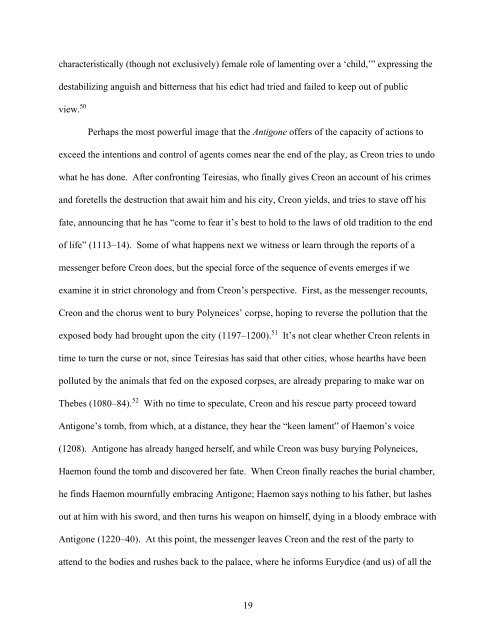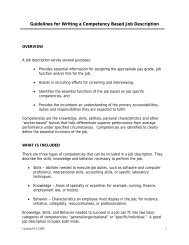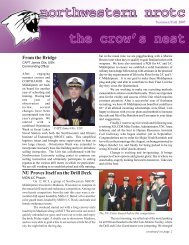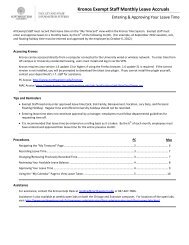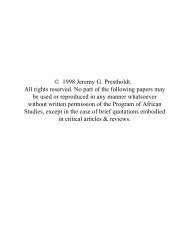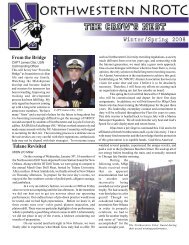TRAGIC RECOGNITION: ACTION AND IDENTITY IN ANTIGONE ...
TRAGIC RECOGNITION: ACTION AND IDENTITY IN ANTIGONE ...
TRAGIC RECOGNITION: ACTION AND IDENTITY IN ANTIGONE ...
You also want an ePaper? Increase the reach of your titles
YUMPU automatically turns print PDFs into web optimized ePapers that Google loves.
characteristically (though not exclusively) female role of lamenting over a ‘child,’” expressing the<br />
destabilizing anguish and bitterness that his edict had tried and failed to keep out of public<br />
view. 50<br />
Perhaps the most powerful image that the Antigone offers of the capacity of actions to<br />
exceed the intentions and control of agents comes near the end of the play, as Creon tries to undo<br />
what he has done. After confronting Teiresias, who finally gives Creon an account of his crimes<br />
and foretells the destruction that await him and his city, Creon yields, and tries to stave off his<br />
fate, announcing that he has “come to fear it’s best to hold to the laws of old tradition to the end<br />
of life” (1113–14). Some of what happens next we witness or learn through the reports of a<br />
messenger before Creon does, but the special force of the sequence of events emerges if we<br />
examine it in strict chronology and from Creon’s perspective. First, as the messenger recounts,<br />
Creon and the chorus went to bury Polyneices’ corpse, hoping to reverse the pollution that the<br />
exposed body had brought upon the city (1197–1200). 51 It’s not clear whether Creon relents in<br />
time to turn the curse or not, since Teiresias has said that other cities, whose hearths have been<br />
polluted by the animals that fed on the exposed corpses, are already preparing to make war on<br />
Thebes (1080–84). 52 With no time to speculate, Creon and his rescue party proceed toward<br />
Antigone’s tomb, from which, at a distance, they hear the “keen lament” of Haemon’s voice<br />
(1208). Antigone has already hanged herself, and while Creon was busy burying Polyneices,<br />
Haemon found the tomb and discovered her fate. When Creon finally reaches the burial chamber,<br />
he finds Haemon mournfully embracing Antigone; Haemon says nothing to his father, but lashes<br />
out at him with his sword, and then turns his weapon on himself, dying in a bloody embrace with<br />
Antigone (1220–40). At this point, the messenger leaves Creon and the rest of the party to<br />
attend to the bodies and rushes back to the palace, where he informs Eurydice (and us) of all the<br />
19


